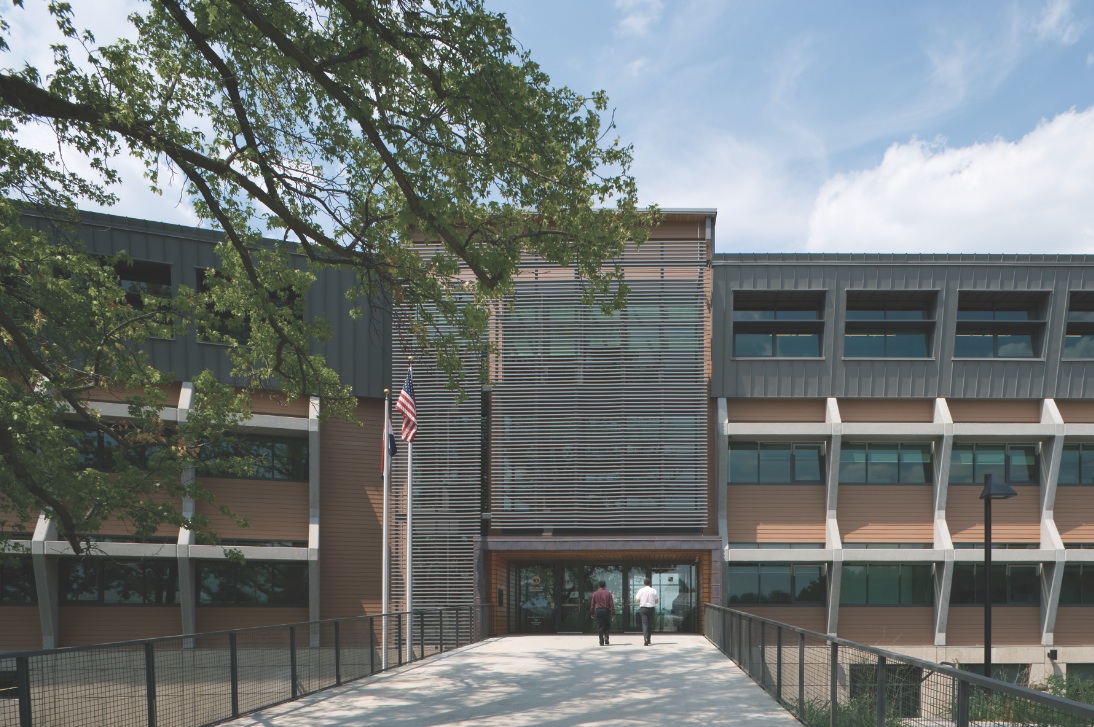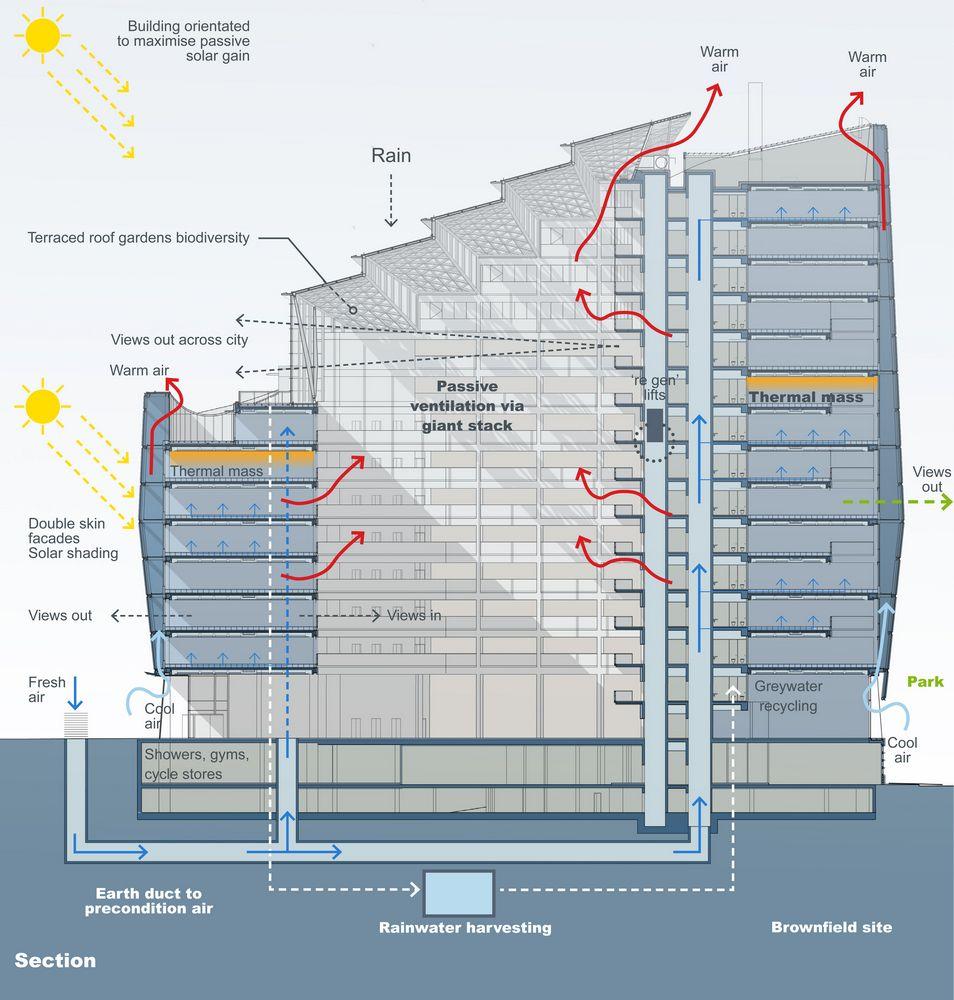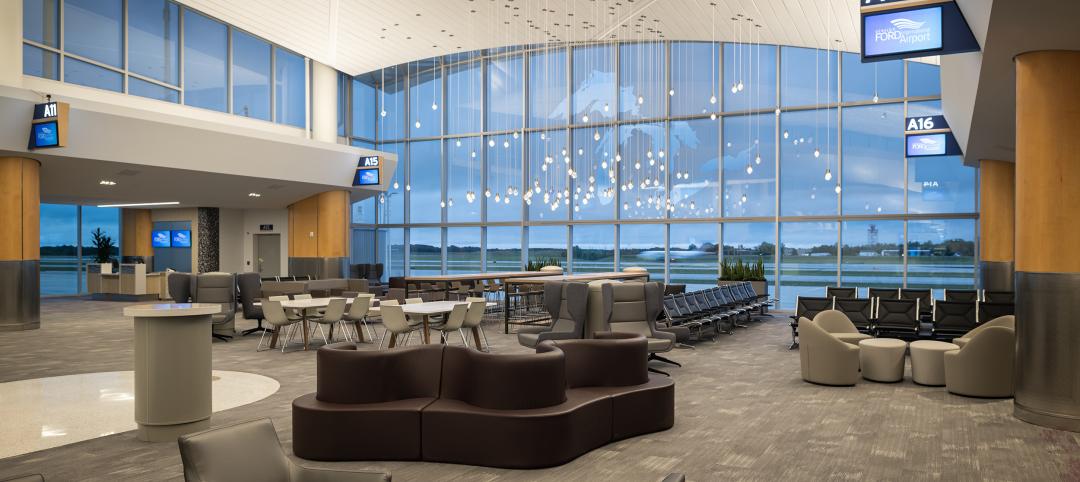For two years, my colleague, architect Ulf Meyer, and I worked on a book, The World’s Greenest Buildings: Promise vs. Performance in Sustainable Design (Routledge), published last January. We were particularly interested in reviewing high-performance green buildings from the U. S. and Canada, as well as those from Europe and the Asia/Pacific region, to see if we could discern some universal goals for green building projects.
We aimed at getting operating data from LEED Platinum (or equivalent) buildings completed since 2003 that represented nonresidential typologies and were at least 50,000 sf in size—in other words, the typical commercial/institutional building type.
In many respects, this work was a follow-up to my 2009 book, Green Building Trends: Europe (Island Press), which looked specifically at European examples and focused on green building technologies and design approaches. What I found in the course of researching that book was a series of great examples of sustainable design and a lively tradition of such buildings that went back 15 years or more.
DATA, DATA, WHO’S GOT THE DATA?
But what was lacking in my study of European green buildings was solid information on actual performance—verifiable data based on real-world field performance that would help link design approaches with actual energy and water use. That was the deficiency that Ulf and I sought to remedy in our research for The World’s Greenest Buildings.
The most surprising result of our two years of research: how few owners of so-called “high-performance” buildings were actually willing (or even able) to share their operating results with us. We ran into this roadblock even with structures built on university campuses or for government agencies?—?the very owners that should, in theory at least, be open to collecting and dispensing such information.
In fact, nothing in law or professional practice compels building owners to share such data. Without feedback from actual operating data, though, how are designers and their project partners supposed to do a better job? (To my mind, it’s a scandal that the standard AIA contract does not require building owners to disclose operating data to their Building Teams and allow them to publish it, a change that the AIA could easily make in support of its commitment to the 2030 Challenge.)
Holabird & Root Architects and Engineers and The Weidt Group worked with contractor Boldt Construction on the $63 million Regents Hall of Natural and Mathematical Sciences at St. Olaf College, Northfield, Minn. The 190,400-sf lab building uses a heat-recovery loop, a so-called “cascade” air system, and a low-flow, variable-air-volume fume hood exhaust system to control energy use. Photo: Don F. Wong/Courtesy Holabird & Root
Fortunately, the landscape is shifting dramatically, partly as a result of a number of local initiatives in cities like New York, Seattle, San Francisco, Austin, Texas, and Washington, D.C., that require owners of buildings of more than 50,000 sf to disclose operating data in publicly accessible databases. (California’s AB 1103 law now requires energy use disclosure, but only when a whole building is sold or leased, so it’s going to be a while before we have any significant data from that mandate.) Fast-forwarding to 2015, we’re likely to have much more data to feed back to building designers, contractors, owners, and operators.
In The World’s Greenest Buildings, we did our best to locate and solicit data from 55 high-performance projects from the three major regions of the world where sustainable design has taken off: North America (15 from the U.S., three from Canada), Europe, and Asia/Pacific (including five from Australia). The lone Latin American project, the Transoceánica office building, in Santiago, Chile, was actually among the lower energy users in the world, which taught us that there are surprises everywhere!
Of the U.S. projects we studied, four were located in the Midwest: Great River Energy Headquarters, Maple Grove, Minn.; Lewis and Clark State Office Building, Jefferson City, Mo.; Regents Hall of Natural & Mathematical Sciences, St. Olaf College, Northfield, Minn.; and Johnson Controls Campus, Glendale, Wis. In the end, we were able to gather building operating data from projects in 18 countries and compare the data within a region as well as across regions.
SET YOUR ENERGY TARGET FROM THE START
Here are a few key lessons that can be derived from the book:
1. In your next building project, you should be able to achieve the same energy and water use as LEED Platinum buildings around the world, because there is nothing magical or geographically specific about good design. What is required is a specific (and early) intent by the entire Building Team to meet clear numerical targets for energy and water use. We found that an energy use intensity (EUI) of 35 (35,000 Btu/sf/year) before adding contributions from renewables can be achieved.
2. What makes high-performance projects stand out is the commitment of owners and their Building Teams to achieving “best-in-class” results. The projects we studied were all LEED Platinum, which means they started with high-performance energy-efficiency goals. What also stands out is the commitment to an integrated design process; it’s almost always the case that without the right process, you can’t get the best outcome.
Great River Energy Headquarters, Maple Grove, Minn., uses underfloor air distribution and generous daylighting, as well as a lake-source geothermal system. Perkins+Will (architect/interior design) led the Building Team of BKBM Engineers (SE), Dunham Associates (MEP), RLK Inc. (CE), and McGough (GC) on the $65 million, 166,000-sf office building for the second-largest electric power supplier in Minnesota. Photo: Paul Crosby / Courtesy Perkins+Will
3. Most surprisingly, high-performance green design uses about the same energy everywhere in the world, from Northern Europe to the tropics. Typically, once you have a good building envelope and efficient HVAC systems in place, half the remaining energy use comes from plug/process loads and lighting, which tend to be geographically about the same in office buildings, leaving only about 15-20% for heating/cooling loads. In the northern latitudes, most loads are devoted to heating in winter, while in the tropics, most loads are devoted to cooling; these more or less balance out over the course of the year.
4. Great green buildings are just as beautiful, if not more so, than buildings with ordinary energy and water performance. Perhaps it is beauty itself that should be our goal in sustainable design. One of the core tenets of our book is that there is no inherent conflict between buildings with architectural merit and those with high-performance green characteristics (such as those with LEED Platinum status) and low-energy outcomes.
5. The last lesson from our research is that there are no standard definitions of building energy use, no good ways to tease out core energy use from special operations such as onsite data centers. In fact, in Australia, we were surprised to find that building energy use is typically reported only for the base building, leaving out tenant loads in commercial offices, a practice that dramatically understates actual energy use. (This is also the case in many European countries.) We hope that researchers in this field will make sure that we can arrive at common definitions, so that comparisons across countries will become much easier in the future.
What does this mean for the U.S. design and construction community?
First, you should aim at having every office and academic building you work on use less than 35,000 Btu/sf/year for “core” uses (i.e., excluding data centers and special process loads such as wet labs), before adding any contribution from renewables.
Second, there are plenty of great design strategies from around the world that are available and that will work in the cold winters and hot/humid summers of the Midwest.
Third, and perhaps most important, an integrated design process is essential for achieving great results.
Author ID: Jerry Yudelson, PE, LEED Fellow, is CEO of Yudelson Associates, a green building and sustainability consultancy in Tucson, Ariz., and author of 13 books on green building, green homes, sustainable development, and water conservation. He has keynoted more than 50 green building conferences since 2007 and delivered the keynote address at the 2013 BUILDINGChicago/Greening the Heartland show.
Related Stories
Giants 400 | Nov 13, 2023
Top 65 Airport Facility Engineering Firms for 2023
AECOM, Jacobs, Arup, Burns & McDonnell, and WSP head BD+C's ranking of the nation's largest airport terminal and airport facilities engineering and engineering architecture (EA) firms for 2023, as reported in the 2023 Giants 400 Report.
Giants 400 | Nov 13, 2023
Top 65 Airport Facility Architecture Firms for 2023
Gensler, Corgan, PGAL, and HOK top BD+C's ranking of the nation's largest airport terminal and airport facilities architecture and architecture engineering (AE) firms for 2023, as reported in the 2023 Giants 400 Report.
Building Materials | Oct 2, 2023
Purdue engineers develop intelligent architected materials
Purdue University civil engineers have developed innovative materials that can dissipate energy caused by various physical stresses without sustaining permanent damage.
Products and Materials | Sep 29, 2023
Top building products for September 2023
BD+C Editors break down 15 of the top building products this month, from smart light switches to glass wall systems.
Giants 400 | Aug 22, 2023
Top 115 Architecture Engineering Firms for 2023
Stantec, HDR, Page, HOK, and Arcadis North America top the rankings of the nation's largest architecture engineering (AE) firms for nonresidential building and multifamily housing work, as reported in Building Design+Construction's 2023 Giants 400 Report.
Giants 400 | Aug 22, 2023
2023 Giants 400 Report: Ranking the nation's largest architecture, engineering, and construction firms
A record 552 AEC firms submitted data for BD+C's 2023 Giants 400 Report. The final report includes 137 rankings across 25 building sectors and specialty categories.
Giants 400 | Aug 22, 2023
Top 175 Architecture Firms for 2023
Gensler, HKS, Perkins&Will, Corgan, and Perkins Eastman top the rankings of the nation's largest architecture firms for nonresidential building and multifamily housing work, as reported in Building Design+Construction's 2023 Giants 400 Report.
Standards | Jun 26, 2023
New Wi-Fi standard boosts indoor navigation, tracking accuracy in buildings
The recently released Wi-Fi standard, IEEE 802.11az enables more refined and accurate indoor location capabilities. As technology manufacturers incorporate the new standard in various devices, it will enable buildings, including malls, arenas, and stadiums, to provide new wayfinding and tracking features.
Architects | Jun 6, 2023
Taking storytelling to a new level in building design, with Gensler's Bob Weis and Andy Cohen
Bob Weis, formerly the head of Disney Imagineering, was recently hired by Gensler as its Global Immersive Experience Design Leader. He joins the firm's co-CEO Andy Cohen to discuss how Gensler will focus on storytelling to connect people to its projects.
Digital Twin | May 8, 2023
What AEC professionals should know about digital twins
A growing number of AEC firms and building owners are finding value in implementing digital twins to unify design, construction, and operational data.



















